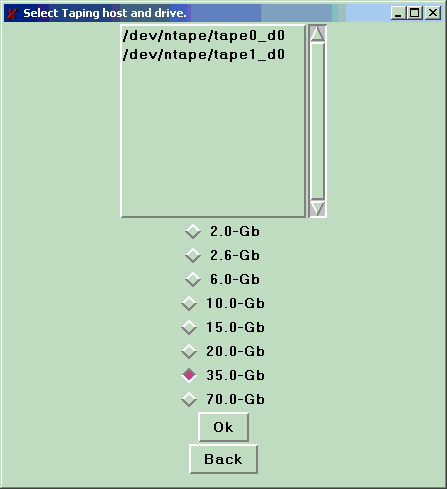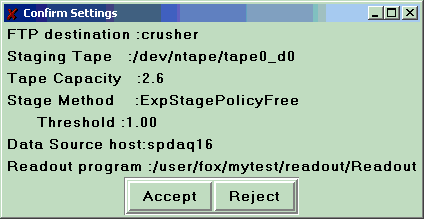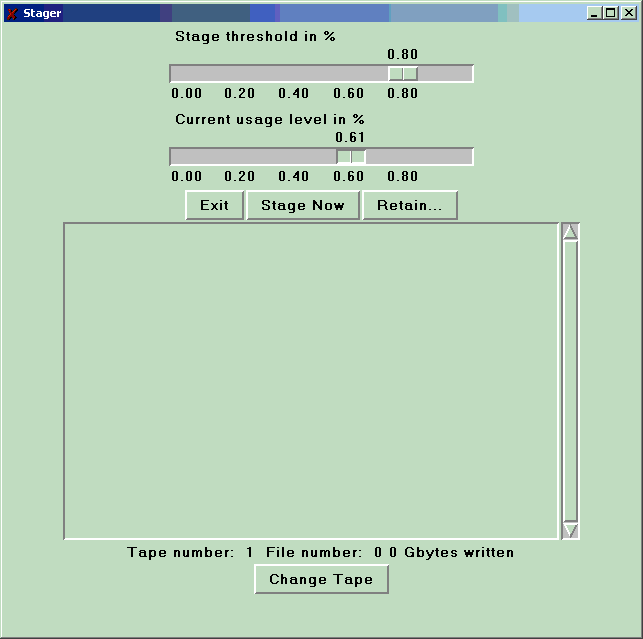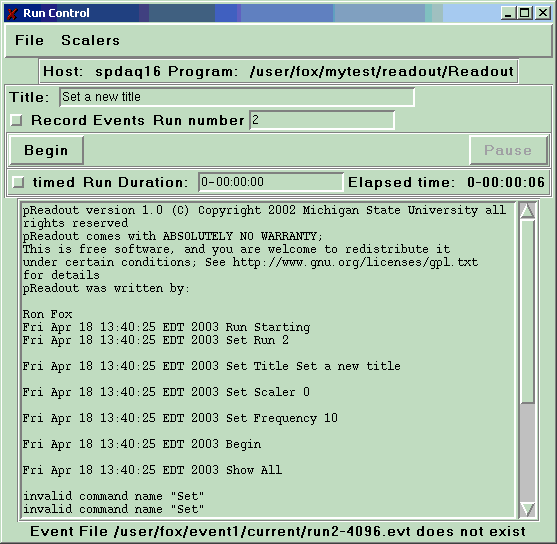



 |  |  | Using Stager/ReadoutGUI |  |
The stager consists of two components:
Stager and its associated graphical user interface (GUI) is responsible for gathering information about your run and using it to decide when and where to spool event data from your staging area out to tape. Staging is done to free up space for additional event data.
Staging produces a Unix tar tape that contains your event data and any other ancillary data you want to associate with each run. Once staged to tape, the event data associated with the staged runs are deleted.
The stager can keep a specified set of files around after the stage pass.
ReadoutGUI runs your readout program on the specified (possibly remote) spdaq system. It provides a graphical front end that allows you to control your experiment.
Features include:
The first time you run stager, you will be interviewed for information about your experimental configuration. The figure below shows the tape host selection dialog:

In the "Host with tapedrive:" text entry, type the name of the computer whose tape drive you will use. Normally, if you are using event1 or event2, you should use daq1. Use daq2 for any other stage area. If you are in doubt about which host to use, ask a member of the computer group support staff.
In the "Password for user" text entry type in your login password for that system. The password will not be readably echoed.
The figure below shows the tape selection dialog.

In this dialog select the actual tape drive to which you will put data and select the capacity of the tape cartridge in the mode in which you will run that drive. In general on Unix, there is no way to programatically determine the amount of data that fits on a tape, the selection you make is used to determine the size of the tape.
The figure below shows the readout program selection dialog:

Type the name of the computer that is attached to your experimental hardware in the top entry. Type the full path to your readout program in the bottom entry line or click the "browse..." button to browse the filesystem for your program.
The figure below shows the stage policy dialog:

Normally, you can leave this alone. The default policy is to start a stage pass when the used space on the stage disk goes above some percentage of total size of the stage area. The alternative is to stage when the total size of the data in your event area crosses a threshold.
If you have already run the stager you will not necessarily have to answer all the questions in this interview again. The stager remembers your answers from the last time it was run. It prompts you to accept them or reject with the dialog box shown below.

If you reject the saved settings, you will have to go through the interview process again. If you accept them, Stager will startup with your saved values.
Once the stager knows what to do, it displays its graphical user interface:

ReadoutGui is started by the stager. The ReadouGui starts up the selected readout program and runs it on the specified spdaq system. The GUI provides a graphical front end to the limited command set of the Readout program.
 You must always run the Readout program on the system
that is connected to your experimental hardware!
You must always run the Readout program on the system
that is connected to your experimental hardware!
The Readout GUI has the following elements:
 |  |  | Using Stager/ReadoutGUI |  |